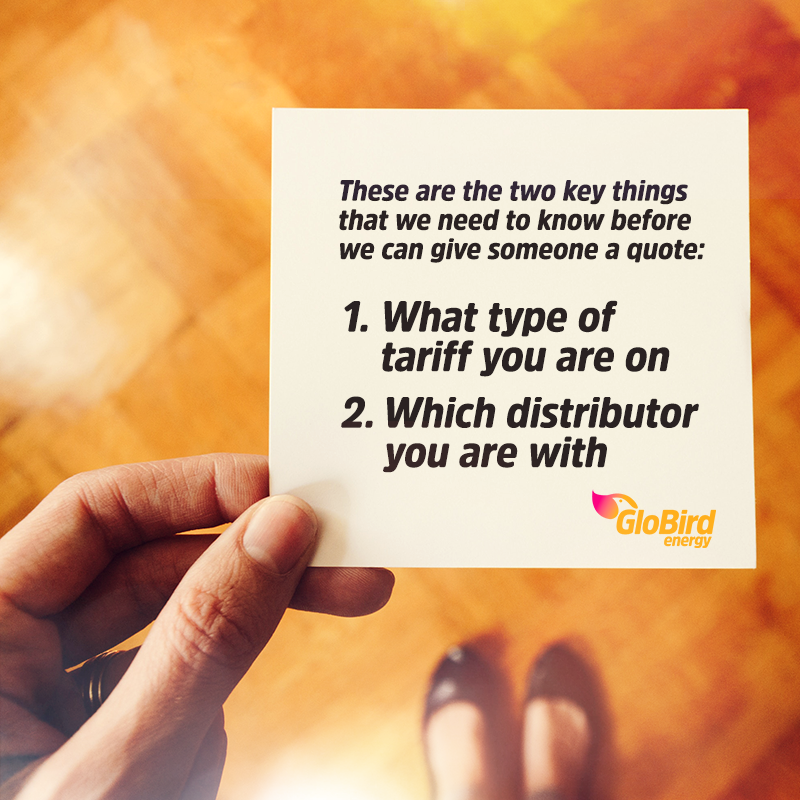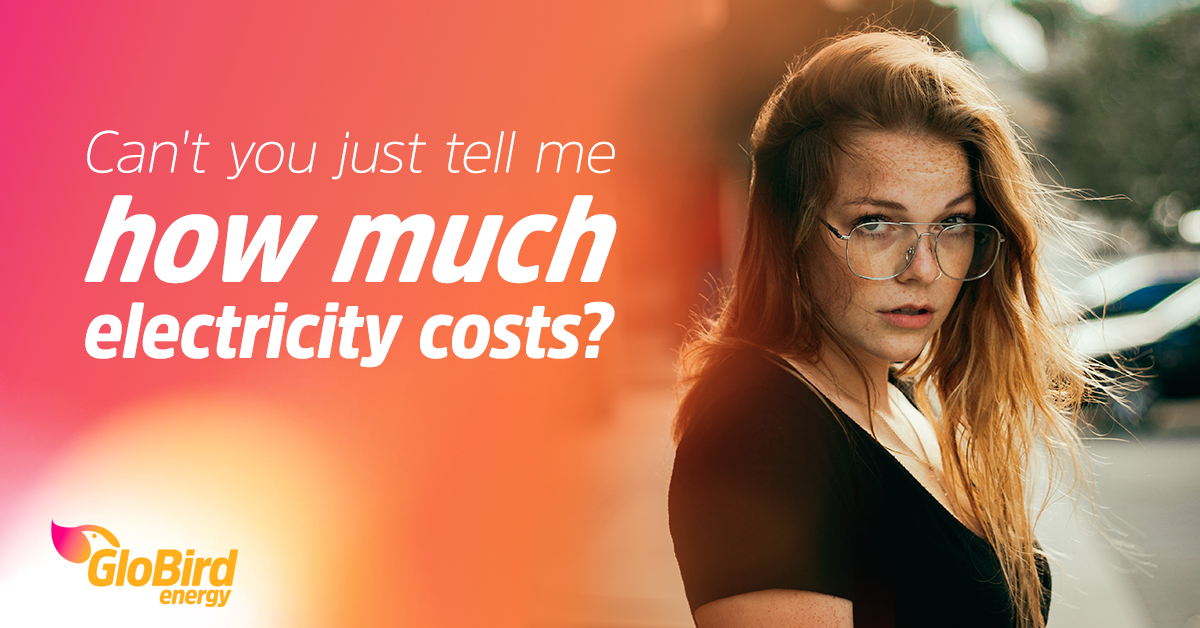This is far and away the most common question people ask and it’s no surprise that they get (more) frustrated when we can’t give them a simple answer. They expect us to be able to say “27 cents per kWh” or “32 cents per kWh” or something equally definitive and understandable.
But, unfortunately, it isn’t that easy. Even worse, it isn’t all that easy to explain why we can’t … but we’re going to try to do that, anyway.
Here goes …
The two major variables
These are the two key things that we need to know before we can give someone a quote:
1. What type of tariff you are on
There are many different types of tariffs
2. Which distributor you are with
There are five electricity distributors across Victoria

What’s a tariff?
The tariff is how much you’re charged for your electricity. It includes the fixed charge – often called either the ‘daily supply charge’ or the ‘service to property charge’ – and the usage charge, which is the amount you pay for each unit, expressed in cents per kilowatt hour (c/kWh).
It does not include any fees to do with your contract, payment method, or anything else.
What are the three main types of tariff?
A flat rate tariff means you’re charged at the same rate for any electricity you use no matter what time of the day or night.
A time-of-use tariff means you’re charged at a higher rate for any electricity you use during the higher-demand peak times of day and a lower rate for your usage during off-peak times (which generally includes weekends). Not everyone is eligible for time-of-use offers.
Flexible pricing goes one step further by introducing a third different rate, called the shoulder rate, which bridges times of day (and demand) which are coming out of peak or going into peak usage times and charges.
There are five the distributors in Victoria
The distributors are the companies that own, maintain, and run the actual physical infrastructure of the networks.
Depending on where you live, you will be in an area serviced by one of these five distributors:
- CitiPower
- Jemena Electricity
- Powercor Australia
- SP AusNet Services
- United Energy
You can read more about them on the Victorian Service & Installation Rules website or look at their areas on this map (which you have to download as a PDF) from the Essential Services Commission.
How do you work out the usage part of the tariff?
Every property has its own electricity meter, which is set up by the distributor as part of the ‘poles and wires’ infrastructure they provide.
Your meter may or may not be set up in the same way as your neighbour’s meter, so comparing your bill with someone you know might not give you an accurate ‘like-for-like’ comparison.
When you look at your own bill, you will probably see a figure for total usage, in kWh, for the period of the bill, and maybe also an average daily usage figure. The average daily usage multiplied by the number of days in the billing period (for example, 91 for some quarters) equals the total usage.
So how can you give me an accurate quote?
What a great question!
Even though knowing your suburb can help us guess which distributor probably looks after your property, we still don’t know your tariff.
However, our online comparison tool asks you to enter your National Meter Identifier (NMI), which is a unique, 11-digit number that – as the name suggests – identifies your property and meter type.
When you get the NMI from your most recent bill and enter that into our comparison page, our system looks you up in the national database and finds out what tariff you’re on.
How you use power also plays a part in any comparison … but that’s a blog post for another time!
Hopefully, we’ve cleared up some of the confusion, but if you have any questions our local customer service representatives would be happy to try to answer them.
Call our Customer Service Hotline on 133 456 or message us through our Facebook page and we’ll give you the best we’ve got!
